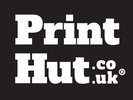In the last few decades, printing has evolved from a very slow, time-consuming task that proved hard to perform on a large scale to being quick, flexible and allowing limitless possibilities. From printing millions of copies of newspapers to printing any image desired onto an item of clothing and making bespoke personalised gifts, there are several different methods of printing that are suitable for different purposes and materials.
For standard word processing jobs, both at home and in the office, you are most likely to use offset lithography. This involves uses a metal plate and rubber blanket or cylinder to press ink onto paper. This method is relatively quick and simple but has certain drawbacks such as the mess and waste produced when ink cartridges are replaced and unpredictable results.
Digital printing has almost limitless possibilities for print
One of the most popular methods of printing and one of the newest is digital printing. This has almost limitless possibilities and usually uses inkjet technology to create an image that you can control and exactly replicate photographs. This is one of the most flexible methods so is ideal for most purposes. There is also variable data printing which is a type of digital printing which allows you to customise each individual copy as needed.
Mass-produced print is clear and precise
As well as commercial, mass-produced print, there are smaller-scale printing projects where you will require a high-quality print that is clear, precise and has a nice feel to it as well as looking good such as wedding invitations. For these purposes, when it is something that needs to have the ‘wow’ factor and will hopefully be kept and treasured, engraving is a good option as it gives an embossed impression or handset letterpress, which is a pain-staking process performed by printing craftsmen using traditional methods. You can also use thermography which gives an embossed effect as it utilises a special powder that adheres with ink and gives a raised effect.
On the other end of the scale, when you have something that needs to be very quickly mass produced, such as catalogues for your company or a magazine, gravure printing can produce millions of identical copies and can be used on other materials such as fabric and plastic as well as paper. This is great for speed and requires very little human input but you need to be extremely thorough with your checks and proofreading as a tiny mistake can produce thousands of wasted copies and mistakes can take a while to be rectified.
Screen printing is another method of printing and one that has been used for hundreds of years, although it has evolved into a quicker method that can be used a bigger range of materials. This is perhaps the most suitable method when printing on clothes and other fabric items such as tote bags and signs.
For pretty much any task, there is a suitable printing method and whatever purpose, material, quantity and quality required, your printing company will be able to discuss the various methods and help you decide on the best one to use.
